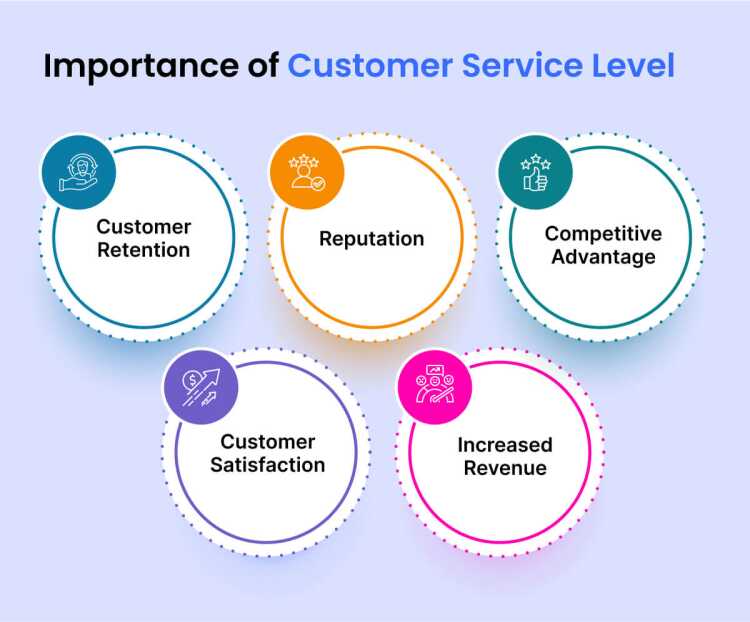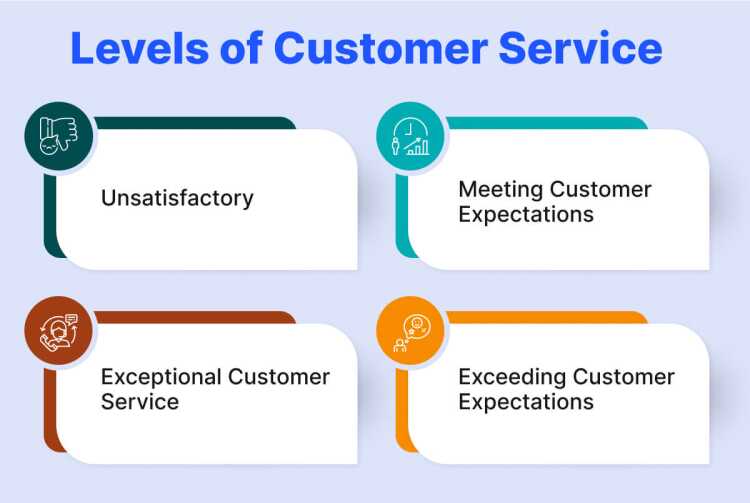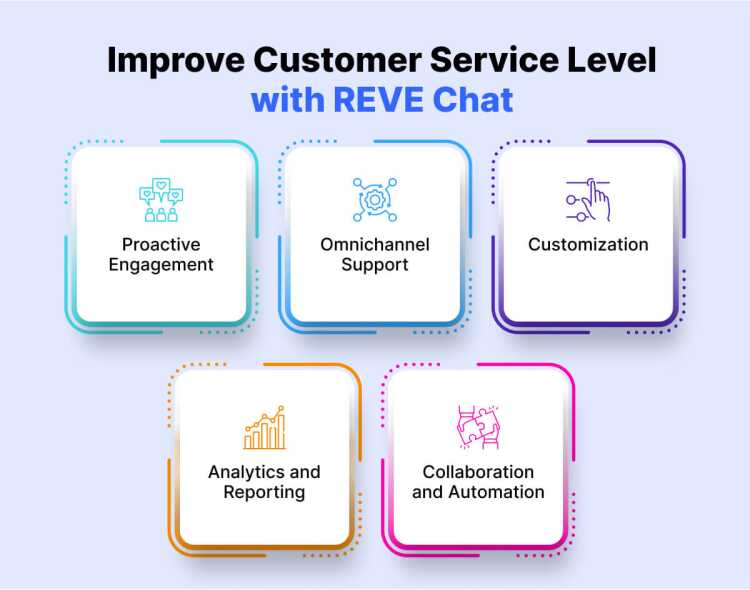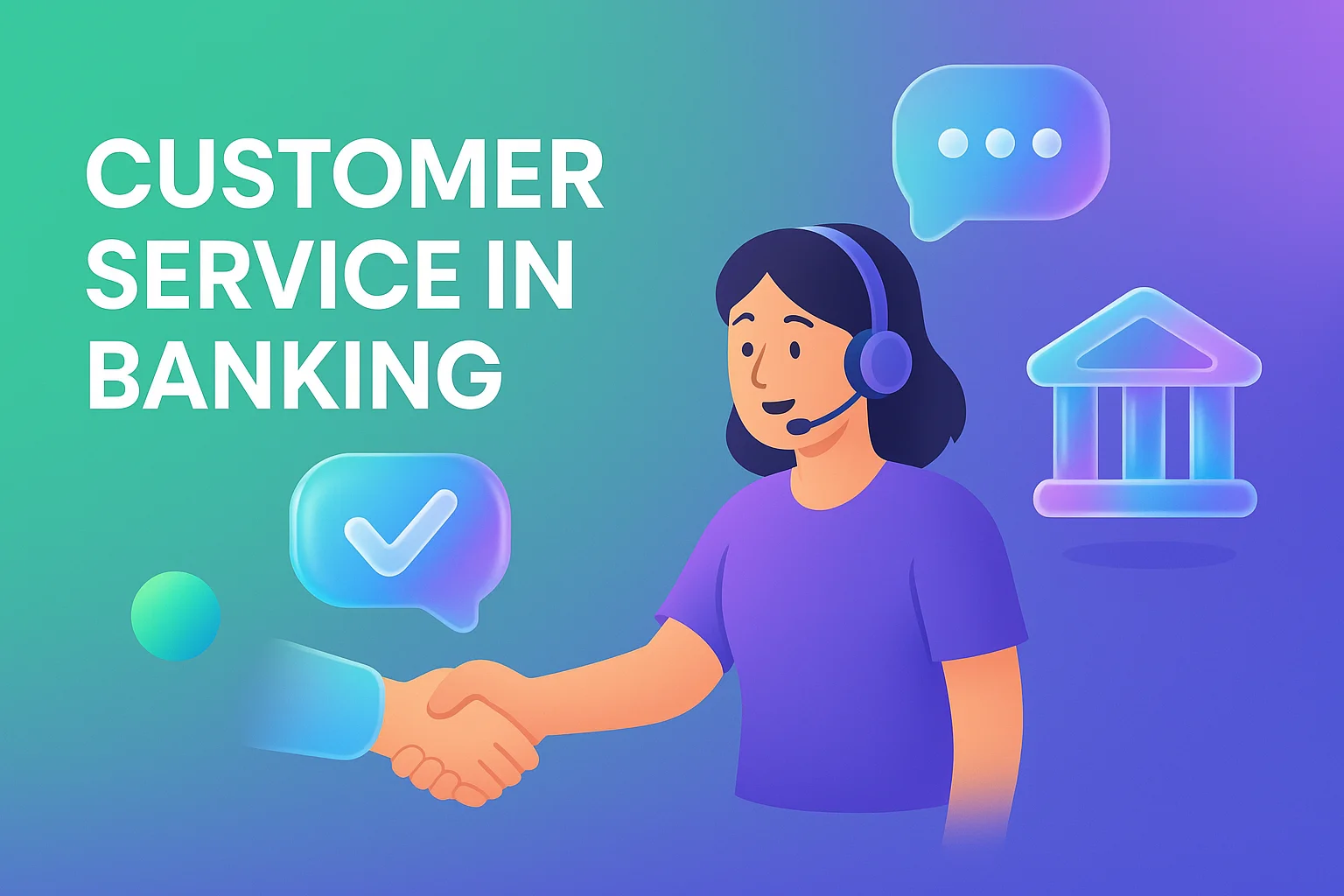Explore Customer Service Levels, Importance & Benefits
- March 16, 2023
- 9 mins read
- Listen

There is no doubt that good customer service is the cornerstone of any successful business. When customers have a positive experience, they are more likely to return and recommend products or services to others.
On the other hand, poor customer service can lead to lost sales, negative reviews, and a damaged reputation.
In this blog post, we’ll explore the importance of customer service levels and provide tips on how to deliver top-notch customer service that will keep your customers coming back for more.
What is the Customer Service Level?
Customer service level refers to the level of support and assistance provided to customers by a business. It is a measure of how effectively a business meets the needs and expectations of its customers when they require assistance, information, or advice.
It can be evaluated through various metrics such as response time, first call resolution rate, customer satisfaction score, and customer retention rate. A good customer service level is one that meets or exceeds customer expectations and helps to build a positive reputation for the business.
Providing excellent customer service requires a combination of effective communication, problem-solving skills, and a customer-centric mindset. It involves understanding and empathizing with the customer’s situation, providing clear and concise information, and taking prompt and appropriate action to resolve any issues or concerns.
You cannot deny the fact that a positive customer experience can lead to increased loyalty, repeat business, and positive word-of-mouth referrals. While poor customer service can result in lost sales, negative reviews, and a damaged reputation.
Why Customer Service Level is Important?
Customer service level is crucial for any business that wants to succeed and grow. If you want to build a customer-centric business then you need to improve your customer service level.
Let’s take a look at some key reasons why customer service level is important:
- Customer Retention: Good customer service is essential for customer retention. When customers receive excellent service, they are more likely to return to your business in the future, increasing customer loyalty and lifetime value.
- Reputation: It is a significant factor in building a positive reputation for your business. It can lead to positive reviews and word-of-mouth referrals, while poor customer service can result in negative thoughts and a damaged reputation.
- Competitive Advantage: It can be a key differentiator between your business and your competitors. It can help your business stand out and attract more customers.
- Increased Revenue: It can lead to increased revenue through repeat business and positive word-of-mouth referrals. It can also help to upsell or cross-sell products or services to existing customers.
- Customer Satisfaction: It is essential for customer satisfaction. When customers feel valued and supported, they are more likely to have a positive perception of your business and recommend it to others.
4 Levels of Customer Service
You can boost your business dramatically just by increasing the level of customer service. Customer-focused service helps the brand to build a good reputation in the market that attracts new customers.
There are generally four levels of customer service. Let’s explore all of these.
Level 1: Unsatisfactory
This level of customer service is the lowest level, where a business is not meeting the customer’s expectations. It may make the customers feel neglected, ignored, or mistreated, which can lead to dissatisfaction and a negative perception of the business.
At this level, customers may express their frustration with the service or product, and it is important for businesses to address their concerns and work to improve their experience.
Key Takeaways:
- Customers may feel ignored or mistreated, leading to a negative perception of the business.
- Customer complaints may arise due to poor service or product quality.
- The business should address customer concerns promptly and work to improve the customer experience.
- Negative reviews or word-of-mouth may harm the business’s reputation.
Level 2: Meeting Customer Expectations
This level of customer service is where a business is meeting the customer’s expectations. The business is fulfilling the basic requirements of the customer, such as delivering the product on time, responding to their inquiries in a timely manner, and providing a satisfactory level of support.
This level of service is the minimum level expected by the customer, and while it may not lead to a positive experience, it can prevent negative experiences and maintain customer loyalty.
Key Takeaways:
- The business is fulfilling the basic requirements expected by the customer.
- While it may not lead to a positive experience, it can prevent negative experiences and maintain customer loyalty.
- The business should strive to meet customer expectations consistently to retain customer trust.
Level 3: Exceptional Customer Service
This level of customer service goes beyond meeting the customer’s expectations and provides an exceptional experience. This level of service is where a business puts extra effort into ensuring that the customer feels valued and appreciated.
This can include personalized attention, going above and beyond to solve their problems, and providing proactive support. Exceptional customer service can lead to a positive perception of the business, increased customer loyalty, and potential referrals.
- The business is providing a high level of personalized attention and proactive support.
- Customers feel valued and appreciated, leading to increased loyalty and potential referrals.
- The business should aim to exceed customer expectations to stand out from competitors and create positive word-of-mouth.
Level 4: Exceeding Customer Expectations
This level of customer service is where a business exceeds the customer’s expectations and provides an unforgettable experience. This can include surprising the customer with unexpected perks or benefits, providing a unique and personalized experience, and creating an emotional connection with the customer.
It can lead to a strong emotional bond between the customer and the business, increased customer loyalty, and potential advocacy, where customers become advocates for the business and recommend it to others.
Key Takeaways
- The business is going above and beyond to provide an unforgettable experience.
- Customers feel a strong emotional connection to the business, leading to increased loyalty and advocacy.
- The business should aim to create unique and personalized experiences that surprise and delight customers, creating positive brand associations.
Ways to Provide High-level Customer Service
You can’t ignore the fact that high-level customer service requires a combination of effective communication, problem-solving skills, and a customer-centric mindset.
Let’s take a look at some of the best ways to provide top-notch customer service:
- Listen to Your Customers: When interacting with customers, it’s important to actively listen to their concerns, questions, and feedback. Ask open-ended questions and show empathy to demonstrate that you care about their needs.
- Respond Quickly: Customers value a quick response time. So, aim to respond to their inquiries and concerns as soon as possible. Set clear expectations for response times and follow through on those commitments.
- Provide Clear and Concise Information: Customers want accurate and relevant information. Provide clear and concise information in a way that is easy to understand and relevant to their specific situation.
- Go Above and Beyond: Exceptional customer service involves going the extra mile to exceed customer expectations. Offer personalized solutions, follow up after the initial interaction, and provide additional resources or support when needed.
- Empower Your Employees: Provide your employees with the tools and resources they need to provide excellent customer service. Empower them to make decisions and resolve issues on their own, which will increase their confidence and autonomy.
- Continuously Improve: Regularly seek feedback from your customers and use that feedback to improve your customer service processes. Continuously evaluate and adjust your approach to ensure that you’re providing the best possible customer experience.
Benefits of the High Level of Customer Service
Providing a high level of customer service can bring numerous benefits to a business. By focusing on providing excellent customer service, businesses can build strong customer relationships and drive business success.
Let’s take a look at some of the key benefits:
- When customers receive excellent service, they are more likely to become loyal to your brand, leading to repeat business and increased customer lifetime value.
- Satisfied customers are more likely to recommend your business to others, which can lead to increased referrals and new customers.
- Providing excellent customer service can enhance your business’s reputation and increase its credibility in the marketplace.
- High-level customer service can lead to increased customer satisfaction and a higher likelihood of customer retention.
- When customers have positive experiences, they are more likely to spend more money on your products or services and to make repeat purchases, leading to increased revenue.
- A reputation for excellent customer service can help your business stand out from the competition, leading to increased customer acquisition and retention.
- When employees are empowered to provide excellent customer service, they are more engaged and satisfied in their jobs, leading to increased morale and productivity.
How Can REVE Chat Help to Improve Customer Service Level?
REVE Chat is an omnichannel customer engagement platform that can help businesses improve their customer service levels in several ways:
- Proactive Engagement: It allows businesses to proactively engage with customers through live chat, chatbots, and targeted messages. This can help businesses provide timely and personalized support, answer customer queries, and resolve issues quickly.
- Omnichannel Support: It provides omnichannel support, allowing businesses to engage with customers through multiple channels like website chat, social media, and messaging apps. This can help businesses provide seamless support across multiple touchpoints, improving the overall customer experience.
- Customization: It allows businesses to customize their chat widgets and messages, creating a personalized experience for customers. This can help businesses create a unique brand identity and stand out from competitors.
- Analytics and Reporting: It provides detailed analytics and reporting, allowing businesses to track customer interactions, monitor agent performance, and identify areas for improvement. This can help businesses make data-driven decisions to improve their customer service levels.
- Collaboration and Automation: It allows businesses to collaborate and automate their support processes, reducing response times and improving efficiency. This can help businesses provide faster and more accurate support, improving the overall customer experience.
Summary
Providing unsatisfactory customer service can harm a business’s reputation and lead to loss of customers while meeting customer expectations can prevent negative experiences and maintain customer loyalty.
However, exceptional customer service and exceeding customer expectations can create emotional connections with customers, leading to increased loyalty, advocacy, and potential referrals.
By striving to provide exceptional or exceeding customer service, businesses can differentiate themselves from competitors and create positive brand associations that can drive long-term success. Sign Up for REVE Chat to increase your customer service level and satisfaction dramatically.






